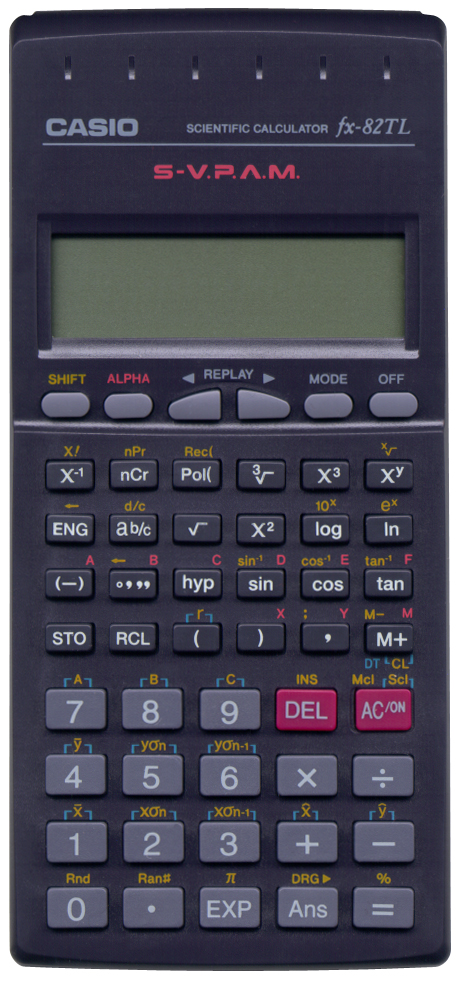
Terminated: unknown
Expressions can be entered as a formula. But the calculator automatically switches to the old fashioned method as well. It’s all quite intuitive. To calculate "93 + 15" one obviously types 9 x3 3 + 1 5 =. Then, to square the answer, simply type x2 and the display automatically shows "Ans ^2". Type = now for the result. It’s a little hard to explain but quite easy to work with. Expressions can be re-performed and edited using the replay keys. The calculator has a two-line display (hence, I am guessing, the TL type designation). The top line is alphanumerical and contains the typed expression. The bottom line is numerical and contains the last calculated result.
The calculator has 9 memories, named A, B, C, D, E, F, X, Y and M. They act as registers, but the M register is automatically added to when the M+ key is pressed. Also, the E and F registers are used as well for answers to two-parameter conversion operations such as Pol( and Rec(.
A very nice feature is one I always tried to program myself on programmable calculators. When the display shows a result like, say, "0.33333333333", press the Ab/c key to reveal the fraction "1/3". The algorithm to perform this calculation is really simple, you can find my own version on my page on the CASIO FX-602P. I don’t know why it took so long to add this feature to scientific calculators.
The statistical and regression functions of this calculator are extremely elaborate.
The calculator is fast, and also important runs on one AA battery. A screw driver however is needed to replace the battery.
Just the one thing, why put "S-V.P.A.M." on the front? It is of course quite obvious what this stands for isn’t it? And why I’d want a calculator with "S-V.P.A.M."? Anyway, according to CASIO it stands for "Super Visually Perfect Algebraic Method".
All in all, I think this is one of the better non-programmable scientific calculators.
Thanks for donating this one, Jan Hurstjes!
So far I’ve found mention of the following types:
- CASIO fx-82
- CASIO fx-82A
- CASIO fx-82B
- CASIO fx-82C
- CASIO fx-82D FRACTION
- CASIO fx-82L FRACTION
- CASIO fx-82LB FRACTION
- CASIO fx-82LP
- CASIO fx-82SX FRACTION
- CASIO fx-82 NASER
- CASIO fx-82SUPER FRACTION
- CASIO fx-82SOLAR FRACTION
- CASIO fx-82TL (this one)
- CASIO fx-82MS
- CASIO fx-82MS 2nd edition
- CASIO fx-82W
- CASIO fx-82ES
- CASIO fx-82ES PLUS
- CASIO fx-82ES PLUS 2nd edition
- CASIO fx-82EX
- CASIO fx-82NL
- CASIO fx-82CE X
- CASIO fx-82CW
- CASIO fx-82 SOLAR II